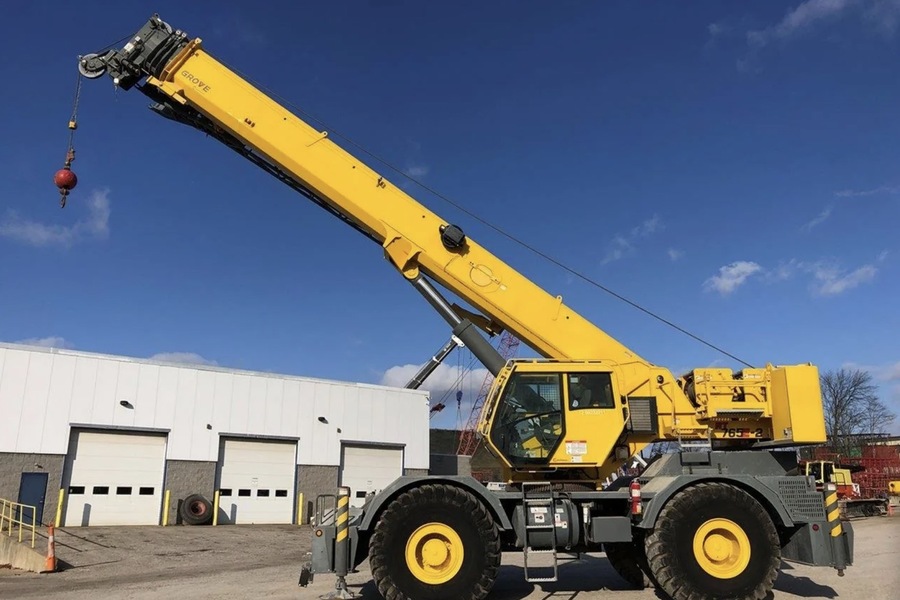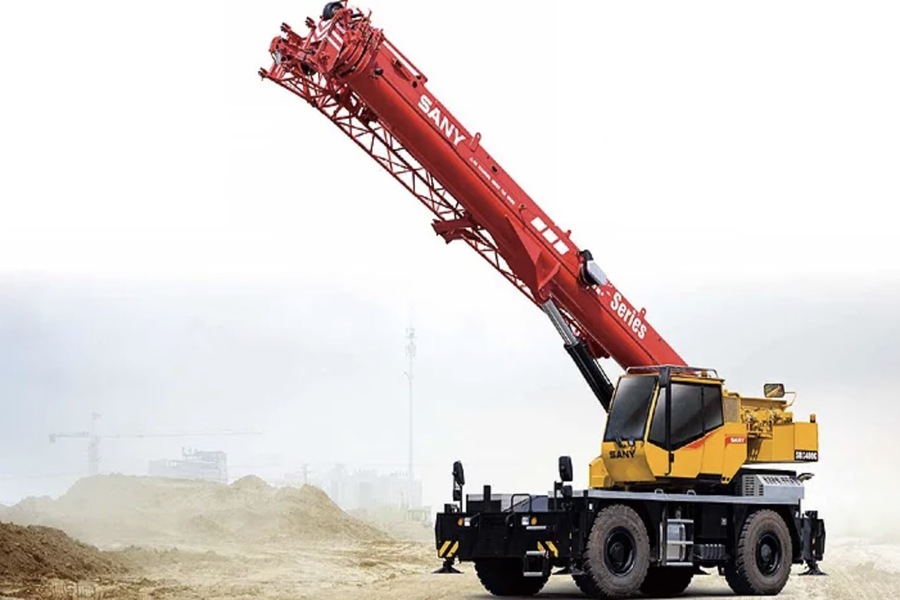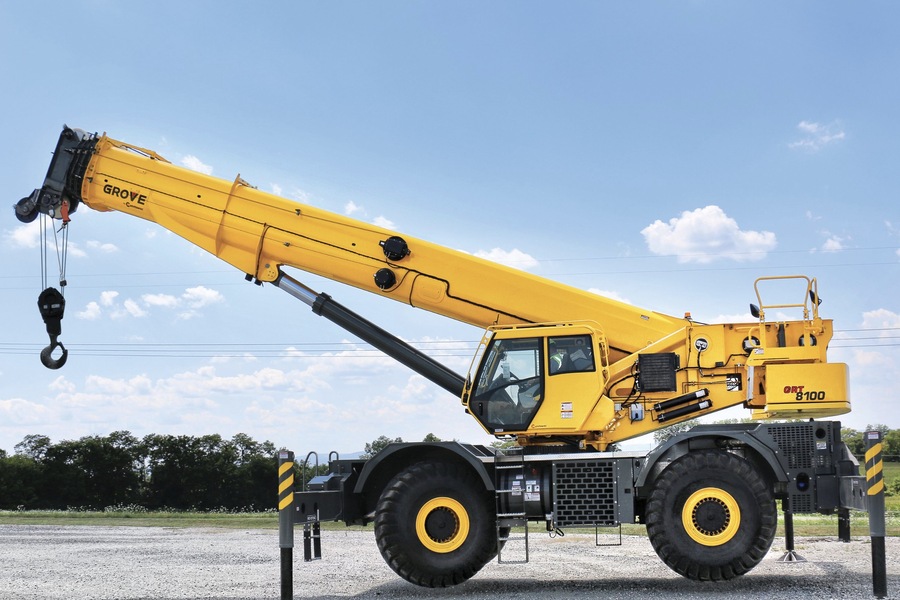The UAE’s rapid urbanization and infrastructure growth have led to one of the world’s most ambitious construction markets. As of 2024, the UAE’s construction pipeline exceeds $145 billion, covering projects in real estate, infrastructure, energy, and tourism sectors. These developments are strategically aligned with national goals like Vision 2030 and the Dubai Clean Energy Strategy 2050, aimed at diversifying the economy and fostering sustainable growth. However, the harsh desert conditions in the UAE pose unique construction challenges that require specialized machinery. Rough terrain cranes, known for their off-road capabilities and heavy-lifting power, play a pivotal role in overcoming these challenges, ensuring smooth project execution across the region.
Navigating Harsh Desert Environments
Construction in the UAE faces several geographical challenges. Shifting sand dunes, uneven ground, and dust storms impact the feasibility of conventional machinery. Projects often take place in remote or undeveloped areas, demanding equipment with the ability to traverse unstable surfaces without requiring paved access. Rough terrain cranes are specifically designed with oversized tires and enhanced suspensions, making them well-suited for these conditions. Their four-wheel steering systems allow precise maneuverability, reducing the need for extensive ground preparation, which can be expensive and time-consuming.
Desert storms and sand accumulation further complicate operations by reducing visibility and affecting stability. Unlike other cranes, rough terrain models are equipped with stabilizers that ensure balance even on soft surfaces. This feature is crucial for maintaining productivity under challenging environmental conditions, as contractors can set up and operate cranes without additional reinforcements.
Adaptation To Temperature Extremes
Temperatures in the UAE often surpass 50°C during summer, impacting both workers and equipment. Construction equipment operating in such high temperatures requires advanced cooling systems to prevent overheating. A rough terrain crane incorporates hydraulic cooling systems and heat-resistant materials to maintain performance under these extreme conditions. Additionally, regular maintenance is necessary to avoid mechanical failures, particularly when cranes are used on remote sites where repair services are limited.
The wide temperature fluctuations between day and night also accelerate wear and tear on construction equipment. Rough terrain cranes are built with durable components that withstand these variations, ensuring a longer operational lifespan and minimizing downtime.

Mobility And Flexibility for UAE Mega Projects
Dubai and Abu Dhabi’s construction landscapes are dominated by mega projects, including the construction of smart cities, airports, and energy plants. These projects often require flexible equipment that can move between multiple locations efficiently. Rough terrain cranes excel in these scenarios due to their mobility. Unlike tower cranes or all-terrain cranes that require fixed setups or smooth roads, rough terrain models can be deployed quickly on uneven and sandy surfaces. This feature is especially useful for projects located in remote areas, such as the Al Dhafra solar plant or the oil fields in Abu Dhabi.
In contrast to their counterparts, rough terrain cranes are easier to transport across sites. They often accompany other heavy machinery as part of fleet logistics, moving seamlessly between construction zones without needing disassembly. These cranes also contribute to faster project timelines by reducing setup times, which is critical for large-scale projects working under tight deadlines.
Precision And Heavy Lifting Capabilities
The UAE’s construction boom involves assembling complex infrastructures, such as modular buildings and large steel structures, that demand precise lifting capabilities. Rough terrain cranes are engineered with advanced hydraulics, giving them the capacity to lift heavy components with exceptional control. Their compact design allows them to operate efficiently in confined spaces, such as urban construction sites where larger cranes may struggle to maneuver.
These cranes are also integral to the installation of prefabricated components, which have become increasingly common in the UAE’s modular construction projects. This approach minimizes on-site construction time, and the ability to lift large modules quickly and accurately ensures seamless assembly.
Supporting Sustainability Goals
Sustainable construction is a growing focus in the UAE, with national initiatives encouraging green building practices and energy-efficient infrastructure. Rough terrain cranes contribute to sustainability by facilitating the construction of renewable energy projects, such as solar farms and wind turbines. These projects require cranes capable of transporting and installing heavy panels and turbines across vast desert landscapes.
Moreover, some crane models are equipped with telematics systems that provide real-time monitoring, helping operators optimize fuel usage and reduce emissions. This aligns with the UAE’s broader efforts to lower the environmental impact of construction and promote energy efficiency across sectors.

Overcoming Regulatory And Logistical Challenges
The UAE enforces stringent safety and environmental regulations for construction projects. Adhering to these guidelines is essential to avoid fines and project delays. Rough terrain cranes are valued for their reliability and safety features, including load monitoring systems that ensure compliance with operational limits. Operators receive comprehensive training to navigate these cranes safely, minimizing the risk of accidents in demanding environments.
Logistics also play a significant role in construction planning. Moving large cranes across borders involves navigating complex import regulations and ensuring compliance with safety standards. Leasing rough terrain cranes has become a popular solution among contractors, as it offers flexibility and reduces the financial burden of equipment ownership. This model allows companies to access the latest crane technologies without long-term commitments, ensuring that projects remain on schedule and within budget.
Conclusion
In the UAE’s rapidly evolving construction industry, rough terrain cranes are indispensable for addressing the challenges posed by harsh desert landscapes. Their ability to navigate uneven terrain, withstand extreme temperatures, and deliver precise lifting capabilities makes them essential for projects of all scales. As the UAE continues to develop sustainable infrastructure and expand its energy sector, these cranes will play a crucial role in meeting construction demands efficiently. By supporting faster timelines, reducing operational risks, and contributing to environmental goals, rough terrain cranes are well-positioned to remain a cornerstone of the UAE’s construction future.
The integration of advanced technology, such as telematics and real-time monitoring systems, ensures that these cranes will continue to evolve alongside the construction industry’s needs. As the region pursues ambitious projects aligned with Vision 2030, rough terrain cranes will remain critical to building a resilient, modern, and sustainable UAE.

Basketball fan, father of 3, music blogger, Mad Men fan and storyteller. Producing at the crossroads of simplicity and intellectual purity to craft an inspiring, compelling and authentic brand narrative.
